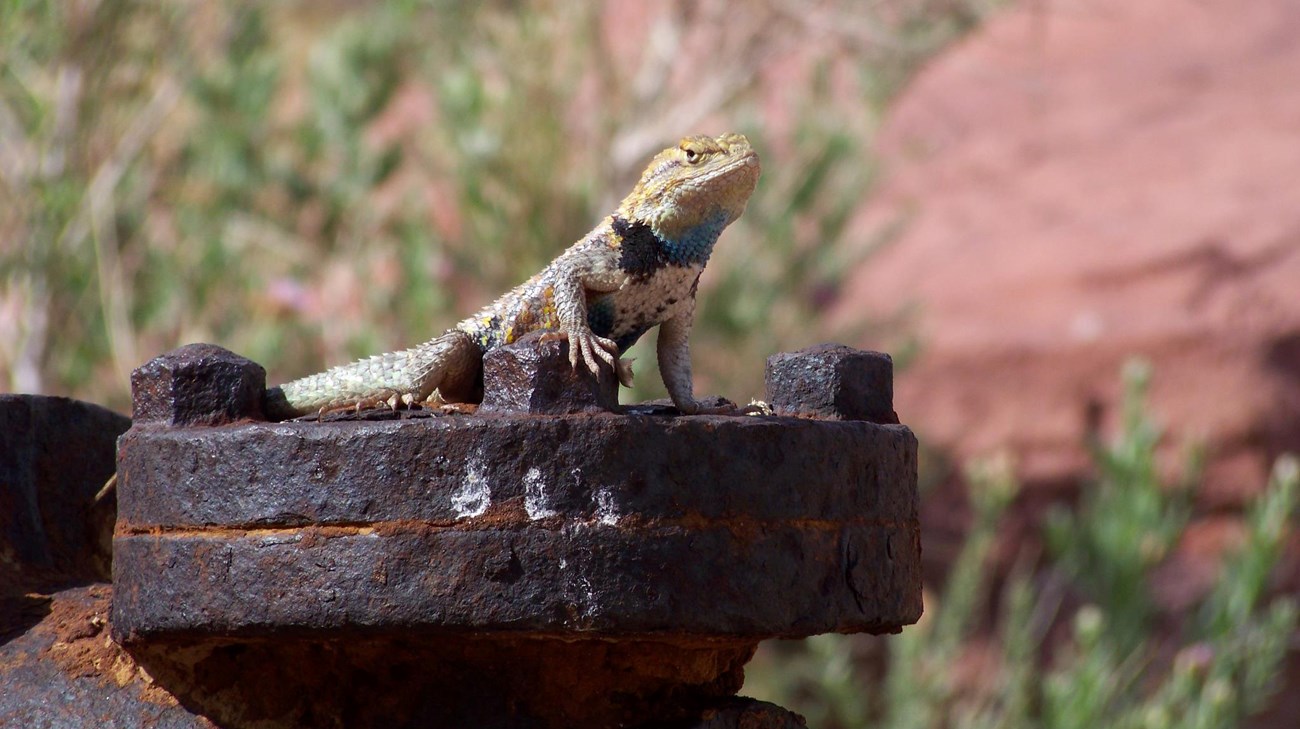
NPS 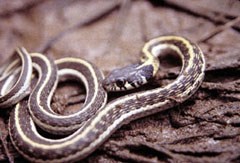
USGS/R. Platenbrg Take a short walk into the Colorado Plateau desert of Glen Canyon National Recreation Area (NRA) and you may find the delicate tracks of a lizard in sand or hear the rustling of dried leaves under bushes. These and other signs may indicate the presence of the most common reptiles in Glen Canyon NRA, lizards and snakes. Like all desert dwellers, reptiles have adapted to survive in hot, arid climates. Reptiles are cold-blooded, or poikilothermic, meaning they regulate their body temperature through external sources rather than by internal metabolism. By spending the hottest parts of the day in the shade, reptiles are able to regulate their body temperature. Lizards sometimes appear to be doing "pushups," which are sometimes used to cool their temperature their environment is too hot. Pushups are more often used as territorial or mating displays. Many reptiles are more active in the early morning, twilight, or night to avoid extreme temperatures and predators. Lizards can be commonly seen during the day while most snakes are more likely to be seen at night. 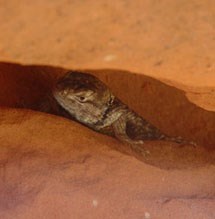
NPS/Joan Mayer Habitat preferences vary by species, though reptiles will escape the heat and sun in shady areas under bushes, tree trunks, and crevices in areas with vegetation. This vegetation also provides habitat for their food sources, which include insects and other invertebrates, small rodents, and birds. Some lizards and snakes may eat flowers or seeds when other food is not available. Reptiles do not chew their food; lizards swallow their food whole, while snakes engulf their prey. Predators of reptiles in Glen Canyon NRA include hawks, owls, roadrunners, badgers, coyotes, foxes, and larger reptiles. The reptiles of Glen Canyon NRA are not well known. A 2003 inventory of reptiles and amphibians of the area expected sixteen lizard species and eleven snake species, but only detected ten lizard species and six snake species, likely due to extreme drought conditions of that year. Future surveys may increase the number of observed species. The sagebrush lizard (Sceloporus graciosus) and eastern fence lizard (S. undulatus) are common to the Colorado Plateau and Glen Canyon NRA. Other common lizards in the area are desert spiny lizard (S. magister), side-blotched lizard (Uta stansburiana), tree lizard (Urosaurus ornatus), and eastern collared lizard (Crotaphytus collaris). The tree lizard has been found in riparian areas, with preferences for slickrock walls and boulders. 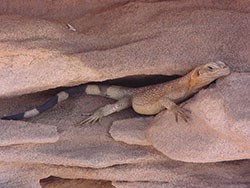
C Sequanna/NPS Photo The chuckwalla (Sauromalus obesus) is the largest lizard found in Glen Canyon NRA. Males in this area have black heads, pale gray torsos, and pale yellow-gray tails. Females are gray-brown with faint spots, the young are banded. When threatened, this large, primarily herbivorous lizard retreats into a narrow crevice and inflates its loose, baggy skin to wedge itself between rocks. Under its loose folds of skin are spaces which can be filled with fluid to be used when moisture is difficult to find. The chuckwalla was historically found along the Colorado River in Glen Canyon as far north as Hite, but likely has a smaller distribution due to Lake Powell. Common snakes in Glen Canyon NRA include the common kingsnake (Lampropeltis getula), black-necked garter snake (Thamnophis cyrtopsis), gopher snake (Pituophis catenifer), and the striped whipsnake (Masticophis taeniatus). The night snake (Hypsiglena torquata) is active at dawn and dusk (crepuscular) and nocturnal. It primarily feeds on lizards, snakes and their eggs, amphibians, and possibly scorpions. Its venom is especially poisonous to other snakes, but has little effect on mammals and no effect on humans. The common kingsnake is generally active in the morning and late afternoon, but tends to be nocturnal in hot weather. Its pattern varied from all black to black with white or yellow bands. 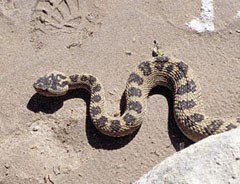
USGS/R. Platenberg There are at least four western rattlesnake (Crotalus viridus) subspecies present in Glen Canyon NRA: midget faded rattlesnake (C. v. concolor), Great Basin rattlesnake (C. v. lutosus), Hopi rattlesnake (C. v. nuntius), and the Grand Canyon rattlesnake (C. v. abyssus). Rattlesnakes are the only venomous snakes in Glen Canyon NRA. Like most reptiles, they will avoid detection if possible. Pay attention to your surroundings as you explore the desert of Glen Canyon NRA. If you hear a rattle, stop moving, listen, identify the location of the snake, and slowly move away. Rattlesnakes perceive humans as possible predators—respect the space of a snake and avoid a defensive strike. The best way to observe a reptile is to first locate the suitable habitat of a particular species, then watch and listen for small movements on rocks or in vegetation, bring a pair of binoculars for a closer view. Keep in mind most reptiles will remain motionless to avoid detection and will quickly move to a hiding place when approached. Increased inventory and monitoring of reptiles can help us better understand these intriguing desert dwellers. Published 8/07 |
Last updated: February 6, 2020
